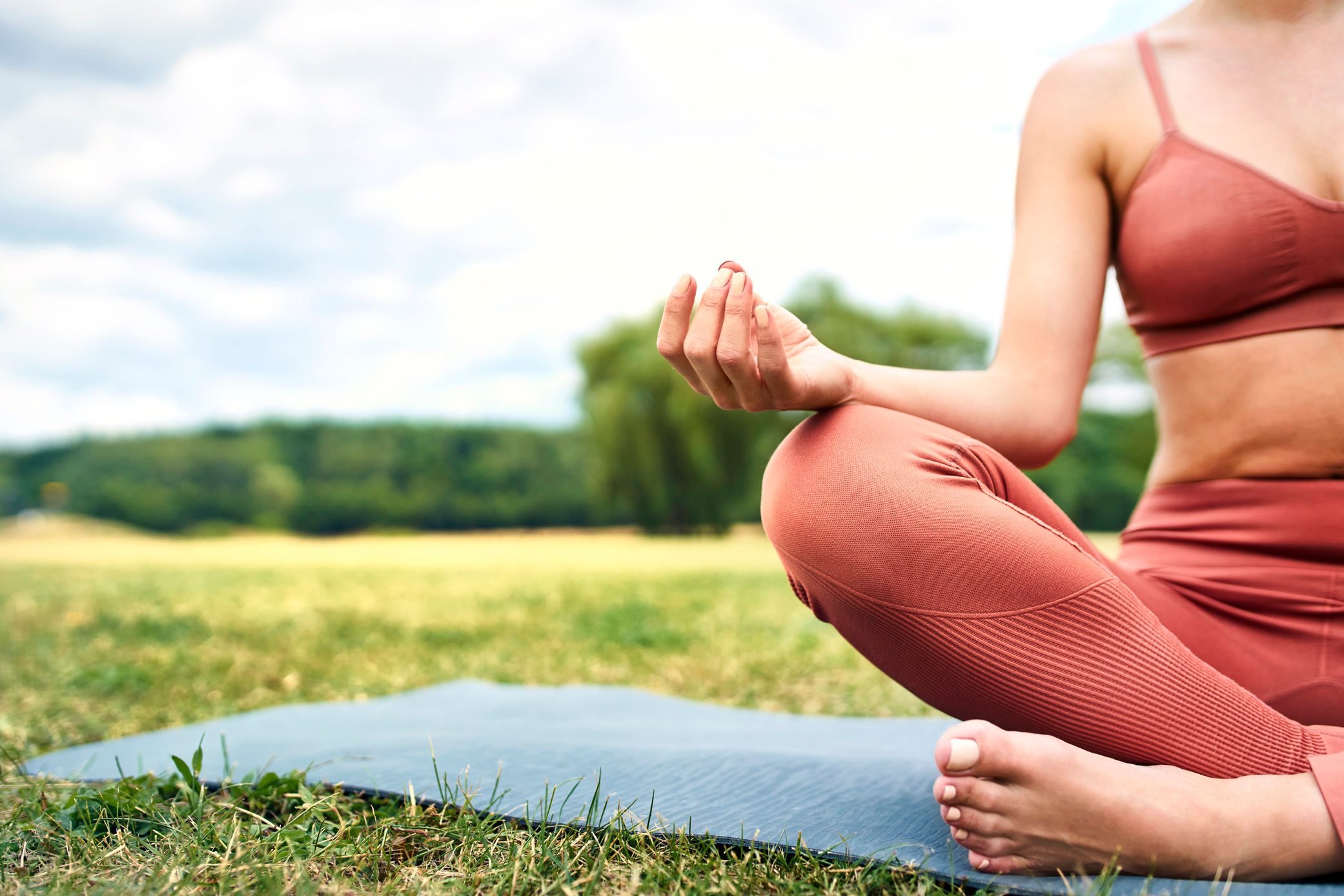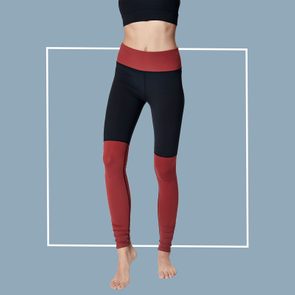What Is Plant-Based Activewear? Everything You Need to Know About Vegan Clothing
Updated: Mar. 14, 2022
Plant-based activewear is ethical, sustainable, and can suit any type of athlete. Learn all about vegan clothing for exercise.
The rise of vegan clothing
Being vegan isn’t just about not eating animal products, like dairy, eggs, and meat. For many vegans, it’s a lifestyle focused on living in a way that benefits the earth and all of the living things on it, including humans. So not only does veganism affect your dietary choices but it also may impact the car you drive, the vacations you take, the shampoo you use, and the clothes you throw on to go to the gym.
“Working out is as much about your head as your body, so I feel it’s important to try and find clothes that fit my personality and ideology,” says Lorri Delahunty, a vegan who works as the director of Vegan Happy Clothing and as a vegan clothing curator. For her, wearing vegan workout gear is both a way to respect her personal beliefs and an opportunity to share them in a low-key way. All her clothing includes a small vegan logo designed to be noticed, hopefully, to spark a conversation, but not overshadow the outfit.
What does a vegan clothing brand label mean?
People aren’t exactly hitting the gym in fur coats, feather boas, or leather pants, and spandex isn’t made from animals so, at first glance, “vegan” or “plant-based” workout gear may seem like a nonissue. It’s a bit more complicated than that, says Joe Flanagan, a fashion researcher, historian, and writer.
Vegan clothing brands offer fitness apparel that has no part in the killing of animals in its materials or production. This means no leather, fur, silk, or feathers, and while your workout pants may not include these, it’s not uncommon to use leather in fitness accessories like weight-lifting gloves and belts, shoes, or bags. For many people, vegan also means avoiding wool, as producing it is seen as cruelty to the sheep, Flanagan adds. Wool is often used in base layers for cold-weather exercise clothing and fitness socks as well as for coronavirus protection masks.
(These are the best cold-weather jackets for walking and running.)
Vegan vs. sustainable clothing
From the viewpoint of many vegans, stopping at simply eliminating animal sources for materials is short-sighted. “Plastic garments, like those made of polyester or nylon, will claim they are vegan, which is technically true, but I don’t know many true vegans who would be caught dead in an all-plastic ensemble,” Flanagan says.
The issue is that these fabrics aren’t sustainably produced. That means their production damages the environment and, in turn, harms the animals (and humans) that live in it.
Athleisure clothing is a surprisingly big source of microplastic contamination in the ocean, according to a 2019 report conducted by the University of Florida. (That’s just one of the ways clothing can be harmful.)
Any clothing that’s made from nylon or polyester—fabrics commonly used in fitness gear like fleece or sherpa jackets and compression leggings—shed “microfibers” (microscopic plastic fibers) when laundered. These microfibers then end up in wastewater and eventually in oceans and rivers, where they are found in a significant amount of sea life, the University of Florida report found. (These facts may make you stop using plastic.)
In addition to materials, it’s important to look at the whole manufacturing process, Delahunty says. True vegan clothing should be ethically produced, meaning that it’s manufactured by companies that don’t use child or slave labor and strive for a zero carbon footprint.
“It’s not just about not using animal products in our clothing,” she says. “It’s about the whole process of manufacturing and being as kind as possible to people and the planet throughout that journey.”

The high cost of low impact
When shopping for vegan-specific activewear, the first thing you’ll likely notice is that it’s more expensive than similar counterparts. It’s due to a combination of economic and environmental factors, says Nick Drewe, a retail economist and CEO of WeThrift, a website that provides coupon codes for savings-minded shoppers.
Vegan athleisure wear sits at an interesting crossroads in the wider apparel world, he explains. On one hand, there’s been an explosion in its popularity, with both new and established brands launching extensive lines to service this growing niche. On the other hand, fitness clothing comes with an entirely different set of functions, varying materials, production methods, and merchandise cycles compared with other retail clothing.
“That combo has pushed vegan athleisure wear into a niche apparel category,” Drewe says. “Its pricing reflects that, which can mean only a select group of shoppers can afford these items in the first place, detracting from the sustainability benefits.”
However, he does see prices dropping in the near future as more people prioritize this type of clothing and more companies get into the market.
(Looking for multipurpose leggings? Check out this 90 Degree by Reflex leggings review.)
Plant-based activewear is not just for vegans
Anyone can wear ethical, sustainably produced clothing—yes, even non-vegans. In a world struggling to deal with climate change, clothing made from vegan and recycled materials appeal to people looking for ways to be kinder to the environment. Consider the carbon footprint associated with things like merino wool, not to mention the land burden, food system entanglements, and escalating water usage and pollution issues.
(Overwhelmed by eco-anxiety? Here’s how to deal with climate despair.)
“It’s less about simple, individual vegan lifestyle choices and more about the impact ethical clothing choices can make even if you aren’t technically vegan,” Drewe says. “This is something everyone should be thinking about.”
How to find vegan activewear
True vegan activewear is made from natural, sustainably sourced, organic vegetable fibers, like linen and cotton. “Natural fibers are better than synthetic fabrics for regulating body heat, absorbing sweat and moisture, and are extremely durable,” Flanagan says.
If you want compression fabrics like spandex, he recommends looking for ones made from recycled plastics.
Delahunty suggests checking out a brand’s website before buying because true vegan clothiers will be very transparent about their materials and where they come from.
Another good option is to shop secondhand stores and websites, Drewe says. This way, you’re not only finding more affordable workout clothes, but you’re also saving them from ending up in landfills or oceans.
(Don’t forget safety: These are the best reflective clothes for running and walking.)
Vegan clothing brands to try
Many big-name athletic brands already offer vegan clothing—it’s just not labeled as such, Drewe says. To find them, go to your favorite clothing brand’s website and filter the options by “man-made” materials. However, if you’re interested in clothing that’s not just vegan but is also sustainable and ethical, check out these vegan clothing activewear brands:
- Ash and Rose: Sustainable activewear for women in unique styles and patterns.
- Elle Evans: Swimwear and workout clothes for women, made from recycled marine plastic
- Pact: Cute and comfy basics for men and women, made entirely from organic, fair-trade cotton
- Plant Athletic: A vegan brand designed for cyclists and triathletes of both genders and dedicated to becoming 100 percent zero waste
- Reprise: A sustainable leggings athleisure brand for women made from plant-based fibers from eucalyptus trees and spandex
- Vegan Athlete Wear: Vegan and ethical workout gear for men and women. Bonus: Cute and funny vegan slogans adorn tops and bottoms.
- Vegan Happy Clothing: A wide range of workout clothes for both men and women, plus 10 percent of your purchase goes towards animal charities
Next, check out these cozy loungewear sets.



















